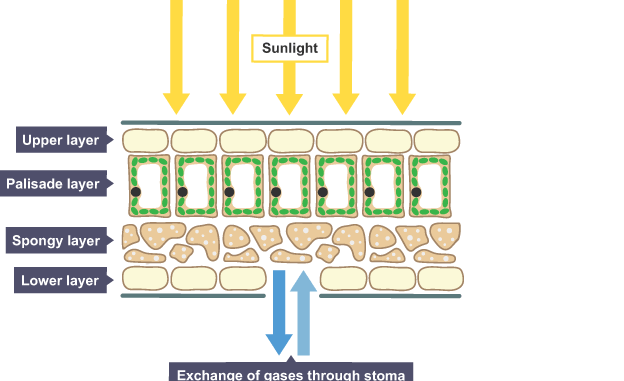
Plant Biochemistry pdf Notes 2023 | BS Botany 6th Semester.Plant Biochemistry pdf Notes 2023 | BS Botany 6th Semester.Plant Biochemistry pdf Notes 2023 | BS Botany 6th Semester.
| Subject | View |
|---|---|
| Plant Biochemistry Practical | Download_View |
What is a plant biochemistry?
Plant biochemistry is the study of the biochemistry of autotrophic organisms such as photosynthesis and other plant specific biochemical processes.
Who is the father of plant biochemistry?
Carl Alexander Neuberg (29 July 1877 – 30 May 1956) was an early pioneer in biochemistry, and he is often referred to as the “father of modern biochemistry”.
ATP synthesis Definition
ATP synthesis involves the transfer of electrons from the intermembrane space, through the inner membrane, back to the matrix. The transfer of electrons from the matrix to the intermembrane space leads to a substantial pH difference between the two sides of the membrane (about 1.4 pH units).
What is CO2 fixation?
Carbon Fixation Definition. “Carbon fixation is the process by which plants fix atmospheric carbon to form organic compounds.” All the autotrophs, bacteria, algae and plants fix atmospheric carbon dioxide by the process of photosynthesis or chemosynthesis.
What is RuBisCO and how is it used?
Ribulose-1,5-bisphosphate carboxylase oxygenase, most commonly known by the shorter name RuBisCO, is an enzyme that catalyses the first major step of carbon fixation, a process by which atmospheric carbon dioxide and water are converted to energy-rich molecules such as glucose, using sunlight.
Where is RuBisCO found?
RuBisCO is found in the mesophyll cell of C3 plants, where carbon fixation through the Calvin cycle takes place.
Enzyme kinetics
Enzyme kinetics is the study of the rates of enzyme-catalysed chemical reactions. In enzyme kinetics, the reaction rate is measured and the effects of varying the conditions of the reaction are investigated.
What do you mean by C3 cycle?
“Calvin cycle or C3 cycle is defined as a set of chemical reactions performed by the plants to reduce carbon dioxide and other compounds into glucose.
C4 Plants Definition
A C4 plant fixes CO2 into a molecule containing four carbon atoms before initiating the Calvin cycle of photosynthesis.
What regulates photosynthesis?
Photosynthesis is tightly regulated via a feedback network that controls the activity of the light-harvesting antenna and prevents photodamage.
light reaction photosystem definition
Photosystems are structures within the thylakoid membrane that harvest light and convert it to chemical energy. Each photosystem is composed of several light-harvesting complexes that surround a reaction center.
| No | Subject | Credit | Course Code | View |
|---|---|---|---|---|
| 1 – | Plant Ecology | 2+1=3 | BOt – 302 | Download – View |
| | | | | |
| 2 – | Genetics | 2+1=3 | BOt – 304 | Download – View |
| | | | | |
| 3 – | Plant Biochemistry | 2+1=3 | BOt – 306 | Download – View |
| | | | | |
| 4 – | Plant Physiology | 2+1=3 | BOt – 306 | Download – View |
| | | | | |
| 5 – | Plant Anatomy | 2+1=3 | BOt – 306 | Download – View |
| | | | | v |
The ultimate goal of biochemistry is to explain all life processes in molecular detail.
Because life processes are perform by organic molecules the discipline of biochemistry relies
heavily on fundamental principles of organic chemistry and other basic sciences. It is of no
surprise that the first “biochemists” actually were organic chemists who specialized in the
chemistry of compounds derived from living organisms. The text provides an historical
overview of some of the key contributions of the early chemists, and of modern 20th century
biochemists who have lead the discipline to where it is today. Research endeavors such as the
human genome project ultimately owe their success to basic discoveries about the structure of
the DNA “double helix” by Watson & Crick and the development of DNA sequencing methods
by Fredrick Sanger.
II. The chemical basis of life.
The biomolecules such as proteins that are present in living organisms are carbon-base
compounds. Carbon is the third most abundant element in living organisms (relative abundance
H > O > C > N > P > S). Fig. 1.1. shows the 29 elements found in living organisms. The most
common ions are Ca+2, K+
, Na+
, Mg+2, and Cl-
. The properties of biomolecules, such as shape
and chemical reactivity, are best describe by the discipline of organic chemistry.
A. Representations of molecular structures.
Your text will use skeletal, ball & stick, and space-filling models to show molecular
structures. Therefore, you must be familiar with each of these types of representations. Skeletal
and ball & stick models are good for showing the positions of nuclei in organic compounds.
Space-filling models show van der Waals radii of the atoms in molecules, i.e., the surfaces of
closest possible approach by neighboring molecules.
B. Chemical bonding.
If necessary, please review the supplemental notes at the end of this section concerning
the atomic and molecular (bonding) orbitals of carbon, nitrogen, and oxygen. sp3
and sp2
molecular orbitals are the most prevalent in biomolecules. The orientations of bonding orbitals in
space ultimately determine the shapes of biomolecules.
